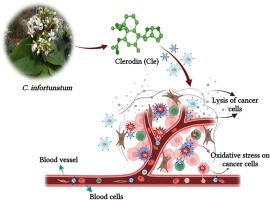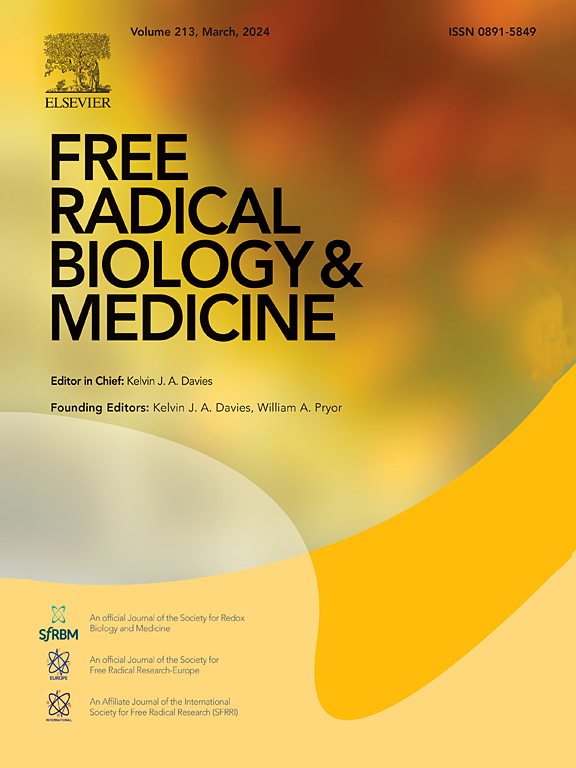Clerodane diterpene 3-deoxycaryoptinol (Clerodin) selectively induces apoptosis in human monocytic leukemia (THP-1) cells and upregulates apoptotic protein caspase-3
IF 7.1
2区 生物学
Q1 BIOCHEMISTRY & MOLECULAR BIOLOGY
引用次数: 0
Abstract
3-deoxycaryoptinol (Clerodin) is a clerodane diterpene isolated from the leaves of Clerodendrum infortunatum. The present research investigates the anticancer therapeutic efficacy of clerodin in human monocytic leukemic (THP-1) cells for the first time. In vitro assay using THP-1 cells showed the cytotoxic ability of clerodin. Further, Annexin-V(FITC)/PI and intracellular ROS (DCFDA) assays carried out using flow cytometry, and confocal laser scanning microscopy confirmed the apoptotic potential of clerodin. Moreover, the Western blot was used to detect mitochondrial apoptosis of THP-1 cells. RT-PCR, ELISA, and Western blot analysis clearly indicated that clerodin significantly increased the expression of pro-apoptotic marker caspase-3 in THP-1 cells. clerodin also selectively targeted the G2/M phase of THP-1 cells, a key feature for anticancer molecules. Importantly, the clerodin did not exhibit cytotoxicity against human peripheral blood cells. These properties of clerodin make it a potential chemotherapeutic agent that can selectively induce apoptosis in leukemia-like cancer cells.

Clerodane diterpene 3-deoxycaryoptinol(Clerodin)可选择性地诱导人类单核细胞白血病(THP-1)细胞凋亡,并上调凋亡蛋白 caspase-3。
3-deoxycaryoptinol (Clerodin) 是一种从 Clerodendrum infortunatum 叶子中分离出来的萜类二萜。本研究首次探讨了clerodin对人类单核细胞白血病(THP-1)细胞的抗癌疗效。使用 THP-1 细胞进行的体外试验显示了锦鸡儿素的细胞毒性能力。此外,利用流式细胞仪和激光扫描共聚焦显微镜进行的 Annexin-V(FITC)/PI 和细胞内 ROS(DCFDA)检测也证实了柯洛丁的凋亡潜力。此外,还利用 Western 印迹法检测了 THP-1 细胞的线粒体凋亡。RT-PCR、ELISA 和 Western 印迹分析清楚地表明,在 THP-1 细胞中,clerodin 能显著增加促凋亡标志物 caspase-3 的表达。重要的是,这种物质对人类外周血细胞没有细胞毒性。这些特性使其成为一种潜在的化疗药物,可选择性地诱导白血病样癌细胞凋亡。
本文章由计算机程序翻译,如有差异,请以英文原文为准。
求助全文
约1分钟内获得全文
求助全文
来源期刊

Free Radical Biology and Medicine
医学-内分泌学与代谢
CiteScore
14.00
自引率
4.10%
发文量
850
审稿时长
22 days
期刊介绍:
Free Radical Biology and Medicine is a leading journal in the field of redox biology, which is the study of the role of reactive oxygen species (ROS) and other oxidizing agents in biological systems. The journal serves as a premier forum for publishing innovative and groundbreaking research that explores the redox biology of health and disease, covering a wide range of topics and disciplines. Free Radical Biology and Medicine also commissions Special Issues that highlight recent advances in both basic and clinical research, with a particular emphasis on the mechanisms underlying altered metabolism and redox signaling. These Special Issues aim to provide a focused platform for the latest research in the field, fostering collaboration and knowledge exchange among researchers and clinicians.
 求助内容:
求助内容: 应助结果提醒方式:
应助结果提醒方式:


